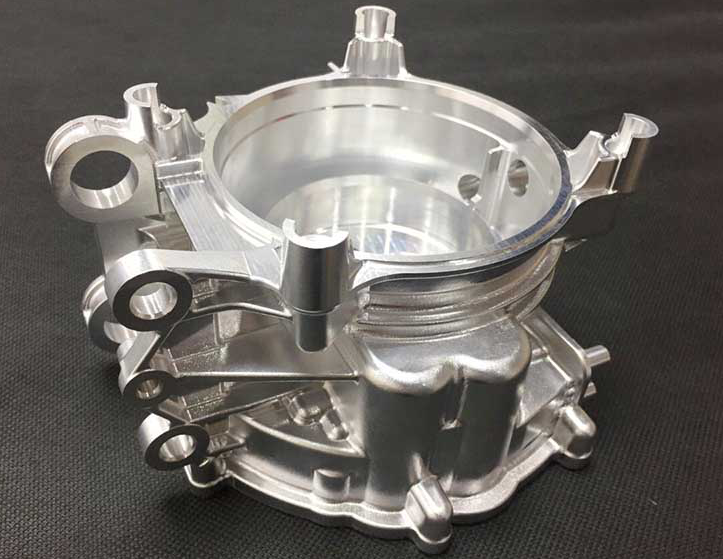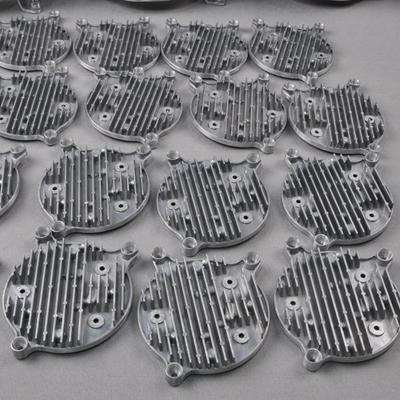Stahl Specialty Company Fundamentals Explained
Stahl Specialty Company Fundamentals Explained
Blog Article
The Definitive Guide to Stahl Specialty Company
Table of ContentsSome Known Incorrect Statements About Stahl Specialty Company The 6-Second Trick For Stahl Specialty CompanyThe smart Trick of Stahl Specialty Company That Nobody is Talking AboutStahl Specialty Company for DummiesStahl Specialty Company Things To Know Before You BuyStahl Specialty Company Can Be Fun For Everyone

If you're designing a metal item, you've likely taken into consideration utilizing light weight aluminum as the base material. It has a high strength-to-weight ratio, great corrosion resistance, good formability, and aesthetic charm. These aspects have actually resulted in its raised appeal in recent times. Pure light weight aluminum has restricted applications, so it is typically incorporated with various other elements, such as silicon, magnesium, and manganese to develop alloys.
Various components and amounts create a broad selection of desirable physical and chemical buildings. And the Light weight aluminum Association (AA), based in North America, has actually produced specs that manage aluminum alloys' composition, buildings, and nomenclature. There are two types of aluminum alloys functioned and cast. Foundry employees create these alloy key ins various methods, which substantially impacts their qualities.
The smart Trick of Stahl Specialty Company That Nobody is Discussing
Cast aluminum alloys are made by melting pure light weight aluminum and integrating it with various other metals while in fluid kind. The mix is poured into a sand, pass away, or financial investment mold and mildew.

160.0 stands for a cast with a minimum of 99.60% aluminum. The 4th number, which comes after the decimal factor, defines if the alloy is a spreading (xxx. 0) or an ingot (xxx. 1). Wrought light weight aluminum alloys additionally start by incorporating liquified aluminum with various other steels. In comparison to cast alloys, however, they are developed right into their last form through procedures such as extrusion, rolling, and bending after the metal has strengthened right into billets or ingots.
There are numerous minor differences between wrought and cast light weight aluminum alloys, such as that actors alloys can have much more considerable amounts of various other metals than functioned alloys. Yet one of the most notable distinction in between these alloys is the construction process whereby they will most likely to provide the final item. Other than some surface therapies, cast alloys will exit their mold and mildew in virtually the precise strong form wanted, whereas wrought alloys will certainly go through numerous modifications while in their strong state.
If you think that a wrought alloy might be the best for your job, have a look at several of our write-ups that clarify even more regarding particular wrought alloys, such as Alloy 6061 and Alloy 6063. On the other hand, if you believe a cast alloy would certainly be better for you, you can discover more concerning some actors alloys in our Alloy 380 and Alloy 383 short articles (coming soon).
How Stahl Specialty Company can Save You Time, Stress, and Money.
When picking an aluminum factory for your manufacturing requirements, it's crucial to examine several elements. Among one of the most important facets to consider is the experience and competence of the foundry. Foundry. Picking a factory that has the appropriate knowledge of the light weight aluminum casting process, and the portfolio to show for it, aids to have a successful result for your task
Having the experience and industry expertise to engineer your spreadings for optimal manufacturing and quality end results will improve the task. Producing light weight aluminum spreading calls for a complex collection of procedures to accomplish the right outcomes. When deciding on a new aluminum factory to partner with, ensure they have comprehensive market experience and are knowledgeable regarding all elements of the aluminum casting process: design, production, product evaluation, and product testing.
The shop needs to likewise have a tried and tested track document of delivering exceptional products that meet or surpass client expectations. Quality assurance needs to also be at the top of your listing when picking a light weight aluminum factory. By working with a qualified factory that adheres to the requirements for quality assurance, you can shield the stability of your product and ensure it meets your specs.
By selecting a company who supplies services that fulfill or surpass your item requirements, you can be certain that your job will certainly be completed with miraculous accuracy and effectiveness. Specific light weight aluminum shops focus on particular sorts of producing processes or casting methods. Different components call for various manufacturing techniques to cast aluminum, such as sand spreading or pass away casting.
Everything about Stahl Specialty Company
Die spreading is the name offered to the procedure of creating intricate steel elements via use of molds of the part, also understood as dies. It creates more components than any kind of various other procedure, with a high level of precision and repeatability. There are 3 sub-processes that drop under the category of die spreading: gravity die casting (or irreversible mold and mildew casting), low-pressure die spreading and high-pressure die casting.
After the pureness of the alloy is evaluated, passes away are created. To prepare the passes away for casting, it is crucial that the passes away are clean, so that no residue from previous manufacturings remain.
Excitement About Stahl Specialty Company
The pure steel, additionally referred to as ingot, is contributed to the heater and maintained the molten temperature of the steel, which is then transferred to the shot chamber and infused right into the die. The stress is after that kept as the metal solidifies. As soon as the steel strengthens, the cooling process begins.
(https://lnk.pblc.app/pub/4920c349338804)
The thicker the wall surface of Continued the component, the longer the cooling time due to the amount of interior steel that also needs to cool. After the element is totally cooled down, the die cuts in half open and an ejection device pushes the element out. Adhering to the ejection, the die is closed for the next shot cycle.
The flash is the added material that is cast throughout the process. Deburring gets rid of the smaller pieces, called burrs, after the trimming procedure.
The Main Principles Of Stahl Specialty Company

Zinc is one of the most pre-owned alloys for die spreading due to its lower price of raw products. Its deterioration resistance also allows the elements to be long lasting, and it is one of the much more castable alloys due to its reduced melting factor.
As mentioned, this alloy is among one of the most commonly made use of, yet makes will, at times, select light weight aluminum over zinc due to aluminum's manufacturing benefits. Aluminum is very cost-effective and among the extra flexible alloys. Light weight aluminum is made use of for a variety of different items and industries anything from window structures to aerospace products.
Report this page